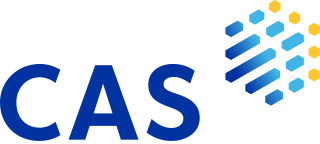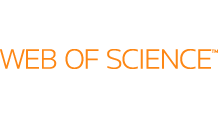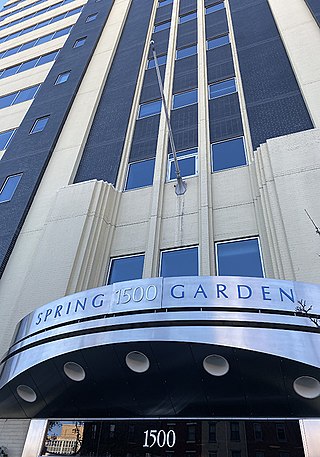
Asure Software, Inc. is a software company. Prior to September 13, 2007, the company was known as Forgent Networks. After rebranding as Asure Software, the company expanded into offering human capital management (HCM) solutions, including payroll, time & attendance, talent management, human resource management, benefits administration and insurance services.
Prior art is a concept in patent law used to determine the patentability of an invention, in particular whether an invention meets the novelty and the inventive step or non-obviousness criteria for patentability. In most systems of patent law, prior art is generally defined as anything that is made available, or disclosed, to the public that might be relevant to a patent's claim before the effective filing date of a patent application for an invention. However, notable differences exist in how prior art is specifically defined under different national, regional, and international patent systems.

Chemical Abstracts Service (CAS) is a division of the American Chemical Society. It is a source of chemical information and is located in Columbus, Ohio, United States.
Yippy was a metasearch engine that grouped searched results into clusters. It was originally developed and released by Vivísimo in 2004 under the name Clusty, before Vivisimo was later acquired by IBM and Yippy was sold in 2010 to a company now called Yippy, Inc. At the time, the website received 100,000 unique visitors a month.
Espacenet is a free online service for searching patents and patent applications. Espacenet was developed by the European Patent Office (EPO) together with the member states of the European Patent Organisation. Most member states have an Espacenet service in their national language, and access to the EPO's worldwide database, most of which is in English. In 2022, the Espacenet worldwide service claimed to have records on more than 140 million patent publications.

The Journal of Molecular Biology is a biweekly peer-reviewed scientific journal covering all aspects of molecular biology. It was established in 1959 and is published by Elsevier. The editor-in-chief is Peter Wright.

A search engine is a software system that provides hyperlinks to web pages and other relevant information on the Web in response to a user's query. The user inputs a query within a web browser or a mobile app, and the search results are often a list of hyperlinks, accompanied by textual summaries and images. Users also have the option of limiting the search to a specific type of results, such as images, videos, or news.

Google Patents is a search engine from Google that indexes patents and patent applications.
FIZ Karlsruhe — Leibniz Institute for Information Infrastructure, formerly Fachinformationszentrum Karlsruhe, is a not-for-profit company with the public mission to make sci-tech information from all over the world publicly available and to provide related services in order to support the national and international transfer of knowledge and the promotion of innovation. The service institution is member of Gottfried Wilhelm Leibniz Scientific Community, a union of German research institutes. The institute provides information services and infrastructure for the academic and research community and maintains a collection of scientific databases.
The Derwent World Patents Index (DWPI) is a database containing patent applications and grants from 44 of the world's patent issuing authorities.

The Web of Science is a paid-access platform that provides access to multiple databases that provide reference and citation data from academic journals, conference proceedings, and other documents in various academic disciplines.

BIOSIS Previews is an English-language, bibliographic database service, with abstracts and citation indexing. It is part of Clarivate Analytics Web of Science suite. BIOSIS Previews indexes data from 1926 to the present.

Bloomberg Law is a subscription-based service that uses data analytics and artificial intelligence for online legal research. The service, which Bloomberg L.P. introduced in 2009, provides legal content, proprietary company information and news information to attorneys, law students, and other legal professionals. More specifically, this commercial legal and business technology platform integrates Bloomberg Law News with Bloomberg Industry Group's primary and secondary legal content and business development tools.
Morten Middelfart is an American serial entrepreneur, inventor, and technologist. He is known for inventing the Lumina Analytics Radiance AI platform, as well as the TARGIT software for business intelligence and analytics. Middelfart is currently the founder/Chief Data Scientist of Lumina Analytics, Advisory CIO of Genomic Expression and founder of Social Quant. Middelfart holds seven U.S. patents for his work in business intelligence and analytics software.
Government crowdsourcing is a form of crowdsourcing employed by governments to better leverage their constituents' collective knowledge and experience. It has tended to take the form of public feedback, project development, or petitions in the past, but has grown to include public drafting of bills and constitutions, among other things. This form of public involvement in the governing process differs from older systems of popular action, from town halls to referendums, in that it is primarily conducted online or through a similar IT medium.
The Clearinghouse for Networked Information Discovery and Retrieval or CNIDR was an organization funded by the U.S. National Science Foundation from 1993 to 1997 and based at the Microelectronics Center of North Carolina (MCNC) in Research Triangle Park. CNIDR was active in the research and development of open source software and open standards, centered on information discovery and retrieval, in the emerging Internet.
Association for Molecular Pathology v. Myriad Genetics, Inc., 569 U.S. 576 (2013), was a Supreme Court case, which decided that "a naturally occurring DNA segment is a product of nature and not patent eligible merely because it has been isolated.” However, as a "bizarre conciliatory prize" the Court allowed patenting of complementary DNA, which contains exactly the same protein-coding base pair sequence as the natural DNA, albeit with introns removed.
Patent analysis is the process of analyzing the texts of patent disclosures and other information from the patent lifecycle. Patent analysis is used to obtain deeper insights into different technologies and innovation. Other terms are sometimes used as synonyms for patent analytics: patent landscape, patent mapping, or cartography. However, there is no harmonized terminology in different languages, including in French and Spanish. Patent analytics encompasses the analysis of patent data, analysis of the scientific literature, data cleaning, text mining, machine learning, geographic mapping, and data visualisation.
Biomedical Research is a quarterly peer-reviewed medical journal covering research on biomedical sciences and experimental medicine. The editors-in-chief are Jin Ding and Ken Ichiro Inoue. The journal was established in 1990 and is now published by Allied Academies, which is included on Jeffrey Beall's list of "potential, possible, or probable predatory publishers". Before being acquired by Allied Academies, the journal was published by Andrew John Publishing.

Clarivate Plc is a British-American publicly traded analytics company that operates a collection of subscription-based services, in the areas of bibliometrics and scientometrics; business / market intelligence, and competitive profiling for pharmacy and biotech, patents, and regulatory compliance; trademark protection, and domain and brand protection. In the academy and the scientific community, Clarivate is known for being the company that calculates the impact factor, using data from its Web of Science product family, that also includes services/applications such as Publons, EndNote, EndNote Click, and ScholarOne. Its other product families are Cortellis, DRG, CPA Global, Derwent, CompuMark, and Darts-ip, and also the various ProQuest products and services.








